Products created by their own hands are always distinguished by individuality and warmth. And what could be better than a unique hand made work that will not only decorate and complement the image, emphasize the refinement of its owner, but also warm and protect from the cold?
Content
As soon as the thermometer begins to sink below many people forget about beauty and fashion, because I want to get dressed as warmer, wrap himself in a warm scarf and protect myself from the surrounding cold. This is not entirely right. After all, an attractive and interesting appearance is not only beautiful. A scarf is very useful and practical. The variety of variations of this part of clothing allows you to create the most daring and bright images. One of the varieties of a scarf is bactus. The original bactus, connected by its own hands, will create a spectacular accent, set the mood to both you and others. How to prepare this accessory?
What is bactus
As you already understood, this is a type of scarf, or rather, a scarf in the shape of a triangle, which is tied around the neck. Norway is the birthplace of the accessory, and who else, if not residents of the northern regions, know how best to protect themselves from the cold? If you own only knitting needles or only crochet, do not worry, you can knit bactus with both knitting needles and crocheted.
The advantages of Baktus
A spectacular accessory has several advantages over its “relatives” - a traditional scarf or shawl.
- Bactus tightly adjacent to your neck and does not give the cold the slightest chance to get to it. At the same time, the product is more elegant and attractive against the background of numerous rings of the classic scarf.
- A beautiful scarf-triangle is also a universal accessory that will organically complement not only the female image, but also children's and even male. Moreover, numerous techniques for tying bactus allow the same product to wear the same product as adults and a child.
- You can easily create a stylish product with your own hands. Knitting techniques of a scarf baktus are even novice needlewomen. Stell yourself, show a little imagination, and you will not notice how you will get an original, unique and warm decoration.
- Leave your favorite grandmother's scarves in the past. Stylish bactus is not only beautiful and practical, but also fashionable. Many couturiers complement the autumn-winter collections with this exquisite accessory.
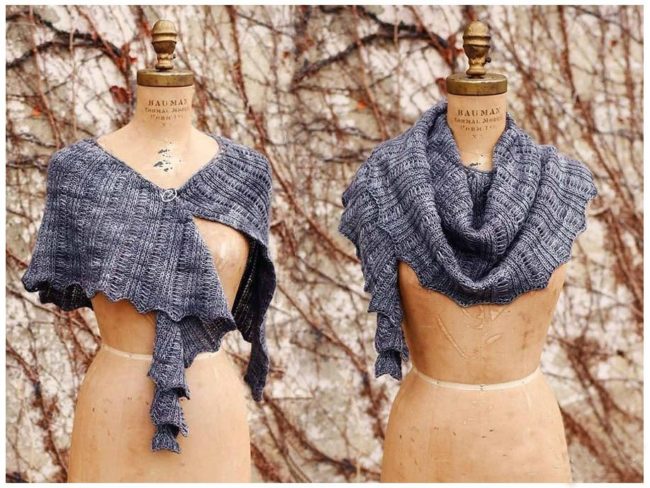
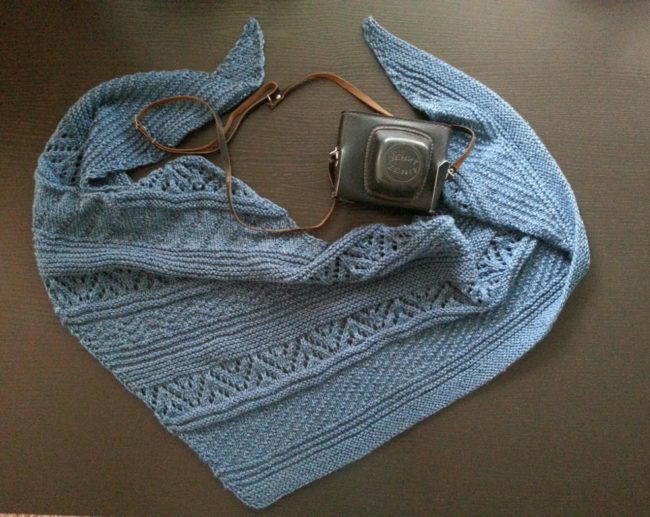
Features of the triangular scarf - bactus
It’s easy to get an original decoration - prepare yarn, knitting needles or hook and, of course, a good mood. The standard dimensions of the bactus are 1.5 m in length and 0.5 m in width, but can change slightly depending on the pattern and the selected yarn. If the product is worn under the outerwear, then the threads use thinner ones. A thick volumetric yarn will give a chic shawl baktus, which will perfectly fall on a coat. Do not think that you can plunge into the arms of a scarf exclusively in winter. Demi-season (spring-autumn) and winter bactus are distinguished. For the manufacture of the first, prepare silk, cotton or with the addition of viscose threads, when knitting winter products, it is recommended to take fluffy volumetric threads - wool, Angorka. A patch knit, openwork patterns, brushes and pompons will help create your own masterpiece.
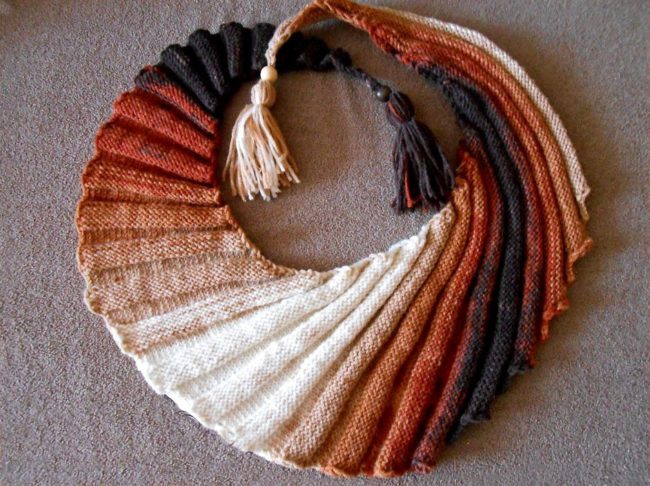
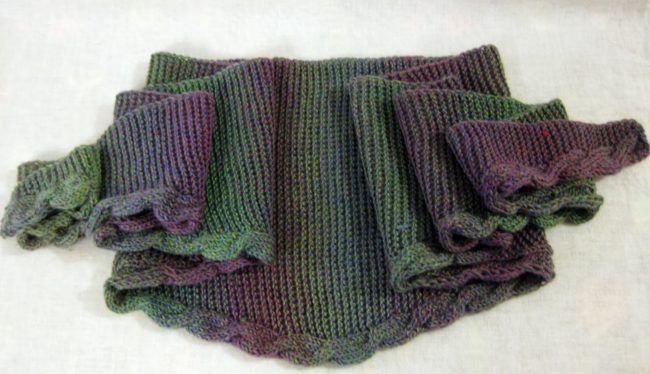
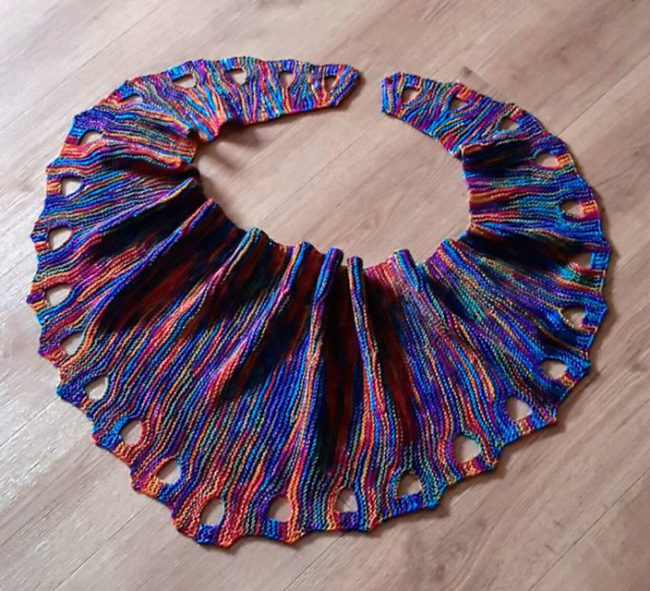
Bactus scheme for beginners
For those who just take their first steps in the world of needlework, you should use a simple and understandable knitting scheme of bactus. Prepare the knitting needles (4 mm) and 300 g of fluffy yarn - woolen or half -wool threads. Now you can start work.
- Get 4 loops.
- The next 3 rows are knitted exclusively by facial loops.
- The increase in the loops begins with the 4th row-knit 2 facials, then make an increase “from the broach”-enter the knitting needle by the front lobe and stretch the loop, and then enter the knitting needle by the rear sliced \u200b\u200band pull the loop again. So you got two from one loop. Next, form 2 facial - from the newly formed loop and from the remaining last.
- The next 3 rows are again knitted exclusively with a prying viscous - only facial.
- Add a new loop in the 8th row in a similar way.
- Add a loop in each fourth row until the width of the product reaches 30 cm (or other width you need).
- Now it is also necessary to reduce the loops sequentially. Similarly, a set of a decrease in the number of loops is carried out in every fourth row. For this, the extreme (for example, the last) 2 loops must be knitted together with a single front.
- Continue to work according to the scheme until 4 loops remain on your knitting needles. Close them.
The scarf is ready. The scheme is simple, so it will become a good help when creating a bactus not only for experienced knitters, but also for beginner craftswomen. As a decoration of the product, you can use beautiful knitted spirals obtained using a hook.
- Form 2 dozen air loops.
- From each loop, prepare 3 blocks with 1 crochet.
- It turned out an interesting spiral for one end. Repeat the actions and get the second spiral.
- Using a hook, attach jewelry to the main product.
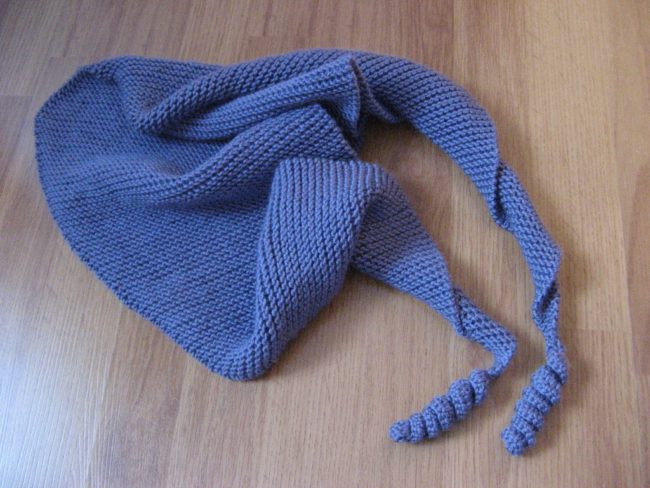
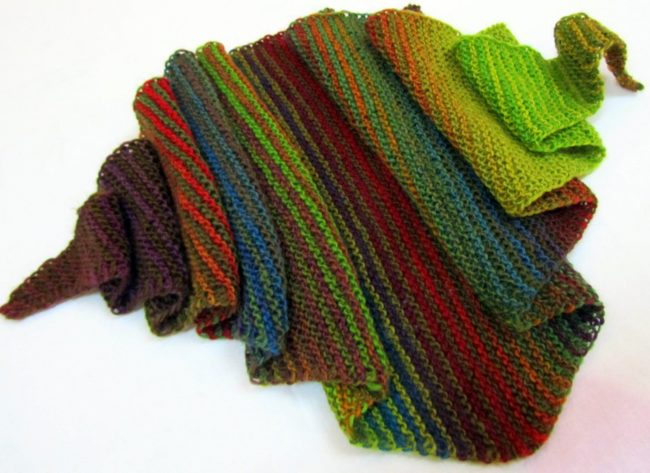
How to tie a bactus "wave -strip"
The needlewomen who are accustomed to stand out from the “gray crowd” will certainly pay attention to unusual and original variations of bactus, the description of which is given below. A separate place among them is occupied by the original model of the “wave -strip”.
- Start work with the formation of 3 loops.
- Next, perform 5 rows using exclusively facial loops.
- Starting with the 6th row (and each subsequent 6th row) add one loop at the end. You perform all the additions on the same side - internal.
- In this way, knit about 40 cm of the canvas (or any other desired width).
- Take a cross -knit. To do this, add each 2nd row by a loop at the end (from the inside) and at the same time, close 1 loop on each 6th row (knit a single loop). Close the loops from the outside.
- Thus, form another 30 cm of the canvas.
- Now, at the beginning of each 6th row, close 4 loops for the formation of the gear edge. In addition, in each even row, add 1 loop at the end, and in each odd - add 1 loop at the beginning.
- Continue knitting the canvas until the desired length is obtained.
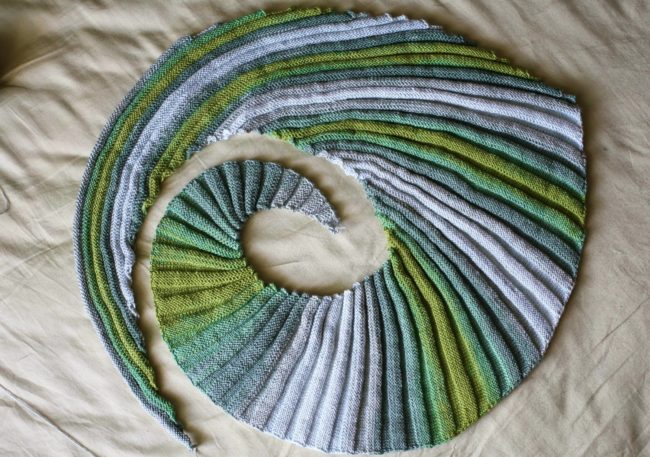

How to tie an openwork bactus
What could be more beautiful and nicer than openwork shawl, gently enveloping your shoulders. To create such a bactus, knitting scheme on knitting needles with a whole border design is used.
- Form 7 loops and turn the work.
- Knit the first loop, and then - 4 rows with a pantry weaving (i.e., facial, removing the first loop of each row).
- Step 1: Start the design of the first tooth. Put the knitting needle (working) and throw 4 air hinges on the knitting needle in yarn.
- Step 2: turned the work, knitting 4 facials (K). Next is the drawing (p): cloak, 2 front, 1 front, 2 facial, cloak, 1 l.
- Step 3: again put down the second knitting needle and throw 4 air hinges on a tool with yarn.
- Step 4: Turned the canvas, (K). The next 7 loops are made out and knit again (K).
- Step 5: They turned the knitting. Form a row according to the scheme: 1 loop was removed, 3 facial, (p), (K).
- Step 6: 1 loop was removed, then 7 wrong and (K).
- Step 7: 1 removed, then (K), front, cloak, 3 together facial, cloak, 6 front.
On this, the drawing block is completed.
- Dial new loops (expansion): 1 removed, 3 facial, 7 wrong, (K), add 4 air loops.
- Repeat the previous stages - step 2 - Step 7.
Having received a shawl of the desired size, close the loops in a classic way or using a hook.
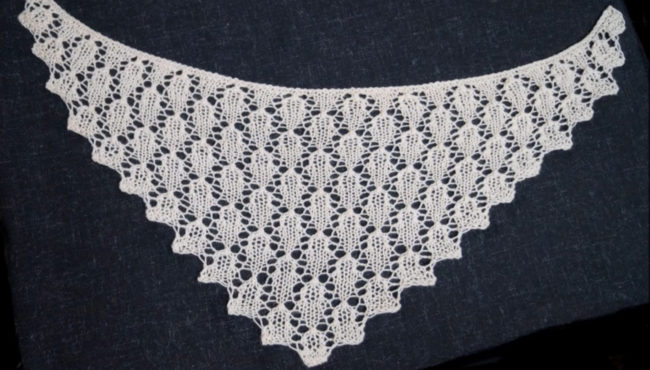
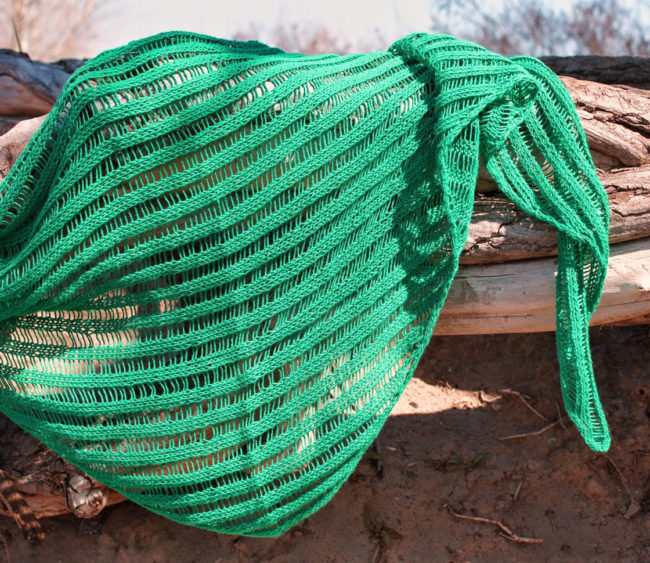
How to tie baktus "leaves"
Who said that you can decorate a knitted canvas exclusively bizarre patterns? A simple but bright drawing will make no less impression than lace knitting. For the current knitting of bactus with knitting needles, prepare 100 g of yarn of the main color-for the formation of a canvas, 100 contrast tones-to create colors and ring knitting needles at least 80 cm long. The size of the finished canvas is 33 cm by 154 cm. The main knitting of the canvas is the patch. The mating density - on a fragment of 10 cm by 10 cm, 24 loops in the 31 row are located.
- We form 3 loops.
- Step 1-Form 2 from the 1st loop, knit all the loops of the row with the faces.
- Step 2 - 2 loops together with the wrong loop, all subsequent ones are facial, and form 2 from the last loop 2.
- Repeat the step 1 and step 2 more 4 times.
Do not break the thread and proceed to the formation of twigs and leaves.
- We wove a new color.
- Row1: Form 2 from the 1st loop, the next knit the following, from the last loop, also make 2.
- Row 2, 4 and 6: form 1 wrong side, then 4 facial. Next, wrap the thread around the knitting needles and turn it (B). As a result, the thread on the knitting needle does not hang, but twisted like a loop.
- Row 3, 5 and 7: Form a number of facial loops, make 2 from the last in a row.
- Row 8: Close 1 loop “Preparation” (1 wrong side, 1 front, put it on the front), the next 4 - facial, (B).
- Remember 9, 11, 13 draw up by knitting the front.
- Row 10, 12: 1 wrong, 1 front, 1 close, then 3 facial. Raise the wrapping thread onto the knitting needle and knit along with the loop (a), then (c).
- Form a row 14 according to the following scheme: 1 wrong, 1 front, 1 close, 3 facial, after - (a). You make out the subsequent loops with the front, from the latter to form 2 loops.
- Turn the thread. Again, knit the canvas (step 1, step 2), and then the strips and leaves (row 1 - row 13) until you get the required size of the scarf.
Close the loops, cut the thread and carefully season the tip.
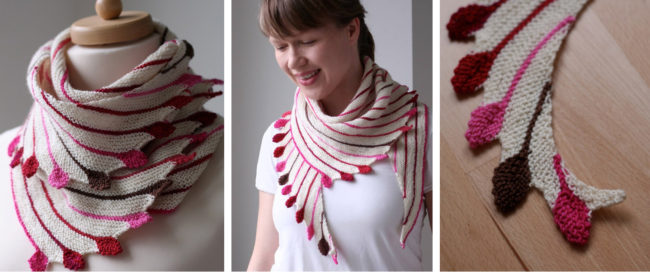
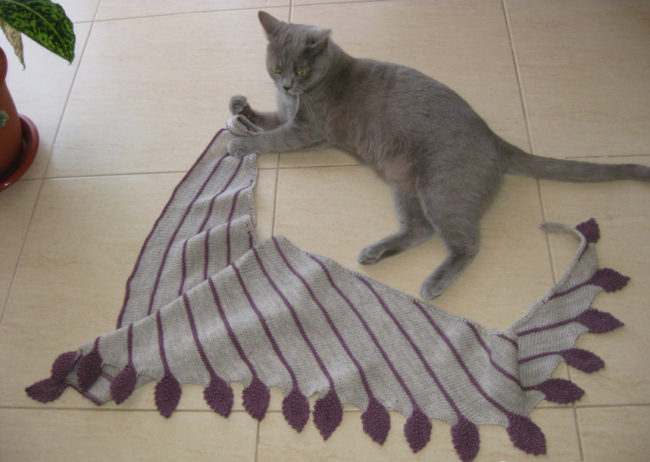
Not always schemes-photography or text description are enough to understand the algorithm of creating a scarf. In this case, video clips that not only describe, but also clearly demonstrate the process of creating an accessory will help to deal with the methodology of knitting bactus. If you are not confident in your abilities, try it anyway. Even at first glance, a bizarre ornament seems to be simple to execute. The variety of motives of scarves in the style of bactus, the photo of which can be found, for example, on the Internet is captured by its beauty and originality. Carefully approach the choice of threads, as even the simplest weaving, made of beautiful yarn, “plays” very spectacular.
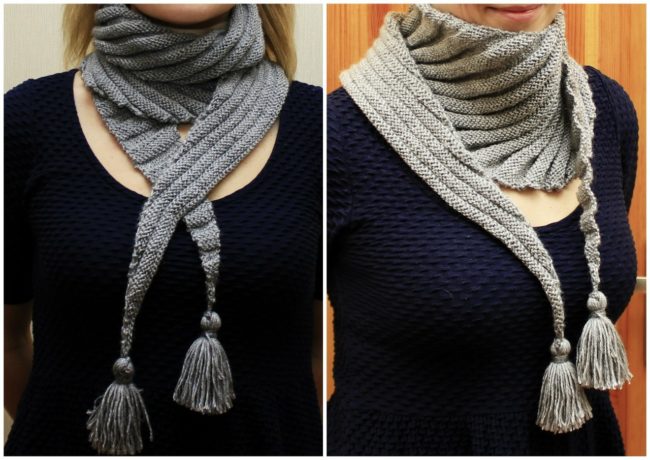









Comments
a couple of years ago, there was no side of metrogils from the same problem, there were no side effects ...
I’m not a fan of peeling at all, it saves from acne of metrogil, it also smoothes it ...
Great article! ...
I take the second course of the Capsules Climafite 911. The tides went very quickly. It became calmer, irritability went away and I sleep well ...
i also noticed - it is worth nervous, everything immediately affects the face. Therefore, I try to avoid conflicts and unpleasant people. Of the creams, I like Miaflow from wrinkles - smoothes not only small wrinkles ...